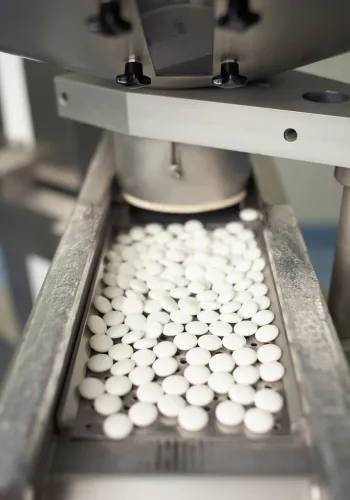
What's a PBM
PBMs (Pharmacy Benefit Managers) help decide drug prices and which meds are
covered. Learn how they work, then use the tips below to pay less.
The Simple Answer

What a PBM does
A PBM sits between drug makers, pharmacies, and your insurance. They negotiate prices and build the formulary (the list of covered drugs). That affects what you pay at the counter.

Why you should care
PBM rules can raise or lower your price based on brand vs generic, preferred pharmacy, or prior authorization. A few smart moves can cut your cost fast.
How Prices Are Set
A quick look at how drug prices move from manufacturer to your pocket.
Step 1: Manufacturer
Manufacturer sets initial drug price
Offers rebates or discounts to PBMs to get drugs placed favorably on formularies.
Raises list prices partly to offset the rebates paid out, contributing to overall inflation of costs.


Step 2: PBM (Pharmacy Benefit Manager)
Negotiates rebates from drug manufacturers in exchange for preferred placement on your plan’s formulary.
Decides which drugs are covered, at what tier, and what requires prior authorization.
Collects rebates and keeps part of them instead of passing all savings to insurers or consumers.
Uses “spread pricing”, billing plans more than what pharmacies are paid, which can increase total system costs.
Often owns or is owned by large insurance companies and mail-order pharmacies, creating conflicts of interest.
Step 3: Plan/Pharmacy
The insurance plan applies your deductible, copay, or coinsurance based on the PBM’s negotiated prices.
The pharmacy is reimbursed by the PBM at a contracted rate that may be lower than what the PBM charged the plan.
Your plan’s preferred pharmacy list is determined by those PBM contracts, not necessarily lowest consumer price.
Pharmacies may face “gag clauses” that prevent them from telling you a cash price could be cheaper (though many states now ban this).


Step 4: You
You pay the copay or coinsurance based on the inflated list price, not the net price after rebates.
Your deductible and out-of-pocket maximum are calculated using that higher list price.
You rarely see the true rebate or discount, which means you can overpay even with insurance.
The same prescription may cost different amounts at different pharmacies depending on PBM contracts.
Without transparency, you’re left comparing prices manually, which is why tools like GoodRx or your pharmacist’s help matter so much.
Money-Saver Tips
Practical ways to lower your prescription costs today.

Compare Cash vs Insurance
Sometimes the cash price with a coupon is cheaper than your copay. Ask the pharmacist to check both.

Ask About Generics or Therapeutic Alternatives
If your drug is Tier 3 or 4, ask your doctor about a generic or an equivalent in a lower tier.

Use a Preferred Pharmacy
Plans often have 'preferred' pharmacies with lower prices. Check your plan's list, then switch your prescription there.

90-Day and Mail-Order Options
Maintenance meds are often cheaper as a 90-day fill, especially by mail order.

Prior Authorization and Step Therapy
If a claim was denied, ask your provider to submit prior authorization or try step therapy. Appeals work more often than you think.

Manufacturer Coupons and Assistance
Brand drugs may have savings cards or assistance programs. Ask your doctor or search the manufacturer's site.

The Bottom Line
You can’t change how PBMs work, but you can work around them: check GoodRx, ask your pharmacist for the lowest price, and don’t be afraid to pay cash when it saves you money. Knowledge is your best discount.
